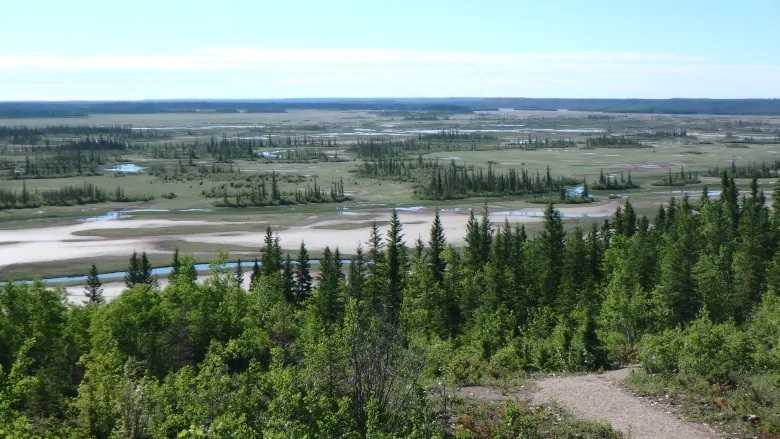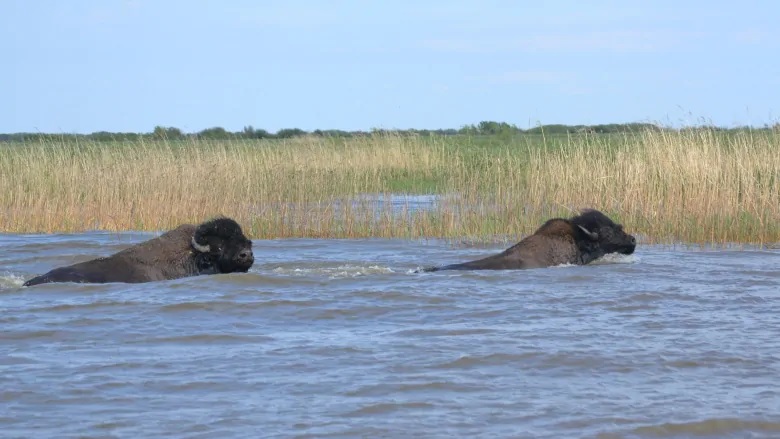
What the future holds the Wood Buffalo National Park, a national treasure that straddles the Alberta-Northwest Territories border, is still anyone’s guess.
It is the largest national park in Canada and the second largest in the world (trailing only Northeast Greenland National Park),
First Nations have depended on the area for cultural, spiritual and physical sustenance for generations.
It is is the only breeding grounds in the world for endangered whooping cranes.
The largest herd of free-ranging buffalo makes its home at the park.

Wood Buffalo National Park last year. (Lennard Plantz/CBC)
But it’s been in trouble for more than a few years now–fighting the ill-effects of climate change and industrialization in the region.
A report last summer concluded that 15 of the 17 measures of the park’s ecological health were declining.
So bad is the trouble that its designation as a UNESCO World Heritage Site is on the line.
UNESCO gave Ottawa until last Friday to come up with a workable action plan to stave off the park being designated as “in danger” due to poor management practices.
Last Friday, deadline day, the federal government submitted a 96-page plan that it hoped would be an improvement on a plan submitted last November that underwhelmed environmentalists.
Among other things, the latest Parks Canada plan calls for increased staffing, better monitoring of oilsands talings and artificially recreating spring flooding to rejuvenate the park’s waterways.
The question most environmentalists are asking is will Ottawa put its money where its mouth is.
At first glance, it appears not.

Bison swim in Wood Buffalo National Park. The largest herd of free-ranging buffalo make its home at the park. (Mikisew Cree First Nation/ Submitted)
Last year’s federal budget included a $1.3 billion, five-year investment in national parks with $27.5 million set aside for Wood Buffalo.
But Ottawa says there will be more, including money from a $50-million oilsands monitoring fund.
We’ll see.
Last week we spoke with Gillian Chow-Fraser, Boreal Program Manager at the Canadian Parks and Wilderness Society’s northern Alberta chapter.
She was cautiously optimistic that Ottawa would meet the challenge.
A week later, Chow-Fraser remains, well, cautiously optimistic.
I spoke with her Tuesday about the the newly-released plan–its ups and its downs–and how UNESCO might react when it meets in July to discuss the issue.
Here is our conversation.


